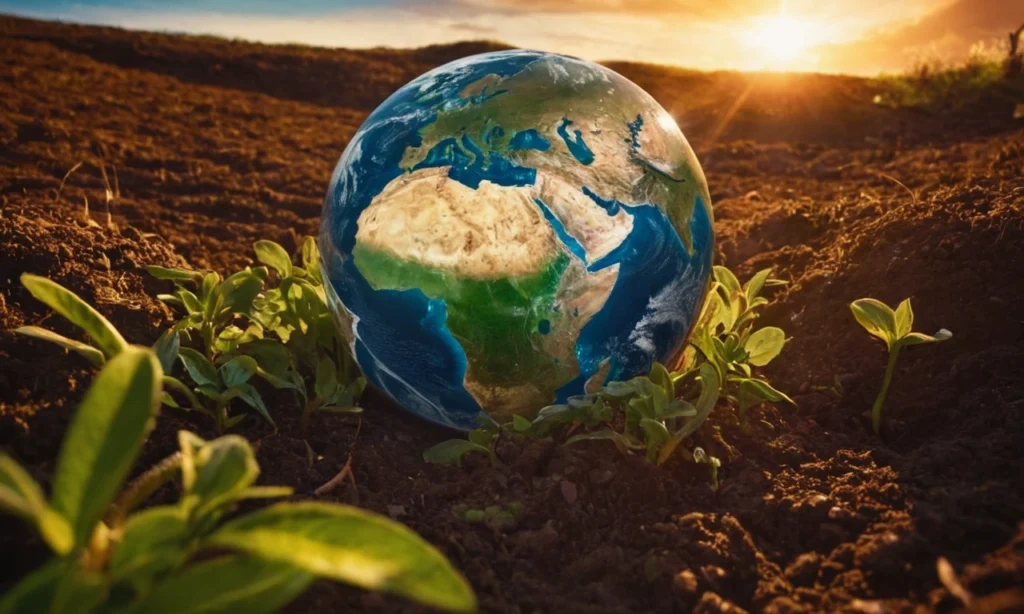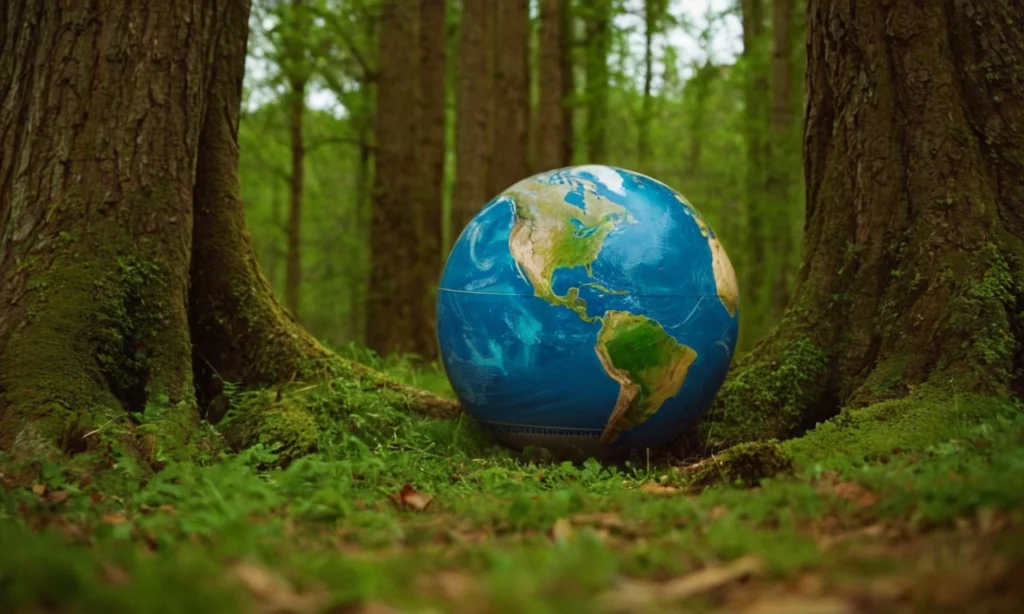As we commemorate Earth Day and reflect on the significance of environmental conservation, it’s essential to recognize that our efforts to protect the planet extend far beyond a single day of celebration. Earth Day serves as a catalyst for action, inspiring individuals and communities to make lasting changes that promote sustainability and safeguard the health of our planet for future generations. In this extended guide, we’ll delve deeper into the importance of environmental stewardship, explore innovative solutions to pressing environmental challenges, and empower individuals to take meaningful action in their daily lives.

The Urgency of Environmental Stewardship
The urgency of environmental stewardship has never been more apparent. Climate change, deforestation, pollution, and loss of biodiversity threaten the delicate balance of ecosystems and endanger the health and well-being of people and the planet. The consequences of inaction are dire, with far-reaching implications for food security, water availability, public health, and socio-economic stability.
Addressing these challenges requires a collective effort that transcends political boundaries, cultural differences, and economic interests. It requires a fundamental shift in our relationship with the Earth—one that prioritizes sustainability, resilience, and harmony with nature. Earth Day serves as a rallying cry for individuals and communities to come together, raise their voices, and demand action from leaders and policymakers at all levels.

Innovative Solutions for a Sustainable Future
Fortunately, there are innovative solutions and technologies available to address environmental challenges and transition to a more sustainable future. From renewable energy and clean transportation to sustainable agriculture and waste reduction, these solutions offer promising pathways to reduce greenhouse gas emissions, conserve natural resources, and build a more resilient and equitable society.
Renewable energy sources such as solar, wind, and hydroelectric power hold immense potential to replace fossil fuels and reduce our reliance on carbon-intensive energy sources. Investing in renewable energy infrastructure and technologies can create jobs, stimulate economic growth, and mitigate the impacts of climate change.
Clean transportation initiatives, including electric vehicles, public transit systems, and active transportation options such as walking and cycling, offer alternatives to traditional fossil fuel-powered vehicles. By promoting sustainable transportation options and investing in public transit infrastructure, we can reduce air pollution, alleviate traffic congestion, and improve public health.
Waste reduction and recycling efforts aim to minimize the amount of waste generated and maximize the reuse and recycling of materials. By adopting circular economy principles and embracing a zero-waste mindset, we can reduce landfill waste, conserve resources, and minimize environmental pollution.

Empowering Individuals to Take Action
While governments, businesses, and institutions play crucial roles in addressing environmental challenges, individual actions also have a significant impact on the planet. By making simple changes in our daily lives and consumer choices, we can collectively make a positive difference and contribute to a more sustainable future.
Here are some actionable steps that individuals can take to promote sustainability and protect the environment:
- Conserve Energy: Reduce energy consumption at home by turning off lights and electronics when not in use, using energy-efficient appliances, and insulating your home to maintain comfortable temperatures.
- Reduce Water Usage: Conserve water by fixing leaks, taking shorter showers, installing water-saving fixtures, and landscaping with drought-tolerant plants.
- Minimize Waste: Reduce waste by choosing products with minimal packaging, buying in bulk to reduce packaging waste, and composting organic materials.
- Support Sustainable Brands: Choose products from companies that prioritize sustainability, ethical sourcing, and environmentally friendly practices.
- Eat Sustainably: Opt for locally grown, organic, and sustainably sourced foods whenever possible. Reduce meat consumption and incorporate more plant-based meals into your diet to reduce the environmental impact of food production.
- Use Alternative Transportation: Walk, bike, carpool, or use public transportation whenever possible to reduce greenhouse gas emissions from personal vehicle use.
- Get Involved: Join environmental organizations, volunteer for conservation projects, and participate in community clean-up events to make a positive impact in your local area.
Deepening Our Impact: Advancing Environmental Justice and Equity
As we continue our exploration of Earth Day and the imperative of environmental stewardship, it’s essential to recognize the interconnectedness of environmental issues with social justice and equity. Environmental justice is the principle that all people, regardless of race, ethnicity, income, or geographic location, have the right to a clean and healthy environment. Unfortunately, marginalized communities and vulnerable populations often bear the brunt of environmental degradation and pollution, exacerbating existing inequalities and disparities. In this extended guide, we’ll delve into the intersection of environmental justice and equity, examine the disproportionate impacts of environmental harm on marginalized communities, and explore strategies for promoting environmental justice and equity on Earth Day and beyond.

Understanding Environmental Justice
Environmental justice emerged as a movement in response to the inequitable distribution of environmental burdens and benefits. It recognizes that low-income communities, communities of color, indigenous peoples, and other marginalized groups are disproportionately impacted by environmental pollution, hazardous waste sites, industrial facilities, and other sources of environmental harm. Earth Day These communities often lack access to clean air, clean water, safe housing, and green spaces, leading to higher rates of environmental-related health problems, such as asthma, cancer, and respiratory illnesses.
At its core, environmental justice is about addressing systemic injustices and ensuring that everyone has equal access to a healthy environment and the opportunity to participate in decisions that affect their lives and communities. It calls for inclusive, participatory approaches to environmental decision-making, policy-making, and resource allocation that prioritize the needs and voices of marginalized communities.
Earth Day Examining Environmental Inequities
The disproportionate impacts of environmental harm on marginalized communities are evident across various environmental issues, including air and water pollution, climate change, toxic exposure, and natural disasters. These communities often face a combination of environmental stressors and social vulnerabilities, such as poverty, lack of access to healthcare, inadequate infrastructure, and historical disinvestment.
For example, studies have shown that low-income neighborhoods and communities of color are more likely to be located near polluting industries, highways, and waste disposal sites, exposing residents to higher levels of air and water pollution. Similarly, indigenous communities and tribal nations often bear the brunt of environmental degradation resulting from resource extraction, land development, and pollution, threatening their health, culture, and traditional ways of life. Earth Day
Furthermore, the impacts of climate change, such as extreme weather events, sea-level rise, and food insecurity, disproportionately affect vulnerable populations, exacerbating existing inequalities and displacement. These environmental inequities reflect broader social and economic injustices rooted in colonialism, racism, and economic exploitation. Earth Day
Conclusion
As we celebrate Earth Day and reflect on our collective responsibility to protect the planet, let us commit to taking meaningful action to promote sustainability and environmental stewardship. By embracing innovative solutions, empowering individuals, and fostering a culture of conservation, we can build a more sustainable and resilient future for all living beings. Let Earth Day serve as a reminder of the power of collective action and the profound impact that each of us can make when we work together to protect the planet we call home.

Pingback: Iranian President Ebrahim Raisi: The Meteoric Rise and Net Worth - LogicFact365